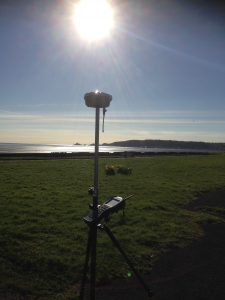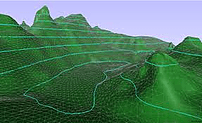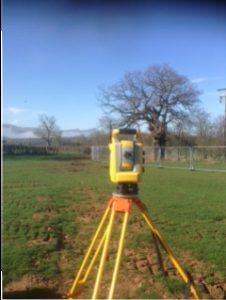GPS Surveys And The Techniques
In this post, we will discuss GPS surveys and the techniques used.
 GPS stands for global positioning system. It is a profoundly precise route framework utilising signals from satellites to decide an area on surface of the Earth, independent of climate conditions.
GPS stands for global positioning system. It is a profoundly precise route framework utilising signals from satellites to decide an area on surface of the Earth, independent of climate conditions.
It is subject to GPS satellites very high over the Earth that transmits signals containing the area and the time of the satellite. Any ground beneficiary that gets signals from at least four GPS satellites usually utilize route conditions to ascertain its area on the surface of the Earth. Steady flagging can then refresh speed and bearing data for moving collectors.
GPS was initially designed for use in the military, however recently it has been opened for non-military personnel utilize and is presently utilized as a part of such basic applications as cell phones, auto route frameworks, and obviously mapping and surveying.
HOW GPS IS USED IN SURVEYING
Mapping and surveying was among the primary business adjustments of GPS, as it gives a scope and longitude position straightforwardly without the need to gauge edges and separations between focal points.
Nonetheless, it hasn’t altogether supplanted field instruments used in surveying, for example, the Electronic Distance Meter, theodolite, or the more present day Total Station, because of the cost of the innovation and the requirement for GPS to have the capacity to see satellites along these lines confining its utilization close to trees and tall structures.
GPS innovation is regularly consolidated into Total Station to deliver solid survey information.
TECHNIQUES FOR GPS ESTIMATION AND SURVEYING
1. Static GPS
A Static GPS is utilized for deciding exact directions for review focuses by at the same time recording GPS perceptions over a known and obscure study point for not less than twenty minutes. The information is then prepared in the workplace to furnish arranges with a precision of superior to anything 5mm contingent upon the term of the perceptions and satellite accessibility at the season of the estimations.
2. Kinematic Real Time GPS
This is the place one collector stays in one position over a known point which is a Base Station while another one moves amid positions which is a Rover Station. The Rover’s position can be processed and put away inside in a few moments, utilizing a radio connection to give a coordinate. This strategy gives comparative exactness to benchmark estimations inside ten km to base station.
3. Consistently Operating Reference Stations (CORS)
It is where a review quality GPS collector is introduced permanently in an area as a beginning stage for any GPS estimations in the locality. Basic clients of CORS are real building activities, mining destinations and also local governments. GPS collectors used by surveyors can then gather field information and join it with the CORS information to compute positions.
Numerous nations have a CORS arrange that are utilised by numerous enterprises. The CORS system in the UK uses a web based preparing framework to convey information over the web inside 24 hours, and also give positions inside an exactness of a couple of centimetres. Nearby CORS systems are likewise used to give moment positions by utilizing a cell phone information connection to give a coordinate remedy to the surveyor and also their rover.
Conclusion
A large portion of the studying strategies depicted create more than the base number of perceptions expected to figure positions or statures. So it is workable for a position or stature to be figured by a few ways through the system of perceptions and get somewhat extraordinary outcomes on account of the vulnerabilities in the overview perceptions.
To determine this, all perceptions are typically joined into a numerical procedure which delivers the best position for each point alongside a gauge of the vulnerability. This procedure is known as a Least Squares modification.
Wikipedia gives more information on GPS Surveys here

 Topographical surveying is defined as the determination and recording of heights and coordinates data for a given surveyed location. The data from such recordings can then be used to produce various topographic products such as spot height and contour maps, and other terrain models of the area surveyed. This helps in describing the shapes and detailed characteristics of various ground features.
Topographical surveying is defined as the determination and recording of heights and coordinates data for a given surveyed location. The data from such recordings can then be used to produce various topographic products such as spot height and contour maps, and other terrain models of the area surveyed. This helps in describing the shapes and detailed characteristics of various ground features. Land surveying identifies the job of a surveyor who helps to locate a piece of property along with the assistance of technology and science. It’s about locating the three-dimensional positioning of the land and additional particulars associated with it. This eventually helps to point out the location regarding terrains or sort out the limits of the different properties.
Land surveying identifies the job of a surveyor who helps to locate a piece of property along with the assistance of technology and science. It’s about locating the three-dimensional positioning of the land and additional particulars associated with it. This eventually helps to point out the location regarding terrains or sort out the limits of the different properties.